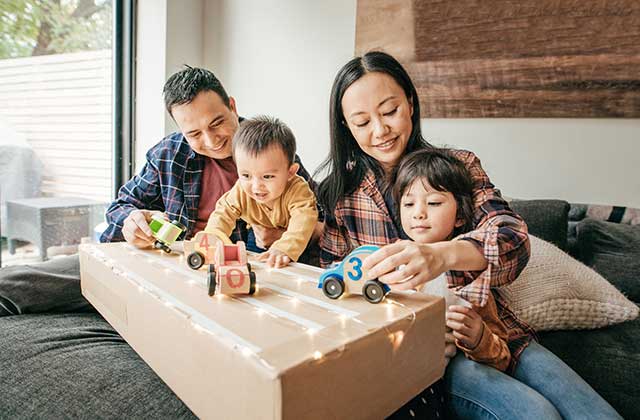It is known that the first year of development of a child’s life matters a lot. In twelve short months, the baby undergoes an incredible transformation. They grow and change at an astounding pace, and every month brings new and exciting development. The biggest difference to the number of neural connections a child will end up with is also made in the first year of their life. Those who have the right early movement experiences in their first year have better concentration, coordination, memory, behaviour, and perception as they grow older.
During the first year of life, the brain will double in size. Much of this growth occurs in the cerebellum, a part of the brain which is in charge of physical development and motor skills. They learn to control their bodies and movements in this stage of development. They learn to hold up their heads, to grasp objects, to roll over, and to stand up.
On the other hand, as the visual cortex changes rapidly, the part of the brain that helps us see, the baby starts to recognize faces. Next is the limbic structure, the part of the brain that controls emotions and long-term memory, which starts to develop, helping the child become more aware of their surroundings.
There are a number of ways that parents can do to prepare their baby for walking from being more conscious to try not to hold them as much to strengthening their legs. Walking may seem like an easy this for us adults, but for babies and toddlers, it is more challenging to do. So, learning to walk is not an easy job for them. But there is no need to worry because they will eventually learn to walk when they are ready. Here are a number of ways to get your baby walking faster.
- Start early
Like most things in life, constant practice is the key to success. This can be done by prepping your baby early on their goal to walk. According to Bellamy’s Organic, most babies will start to support themselves on their legs from around four to five months, when they are held upright. Starting them early is an excellent way to build up their muscle memory as well. Most babies will bend their knees and bounce up and down a bit. This early-stage standing activity gets your baby used to standing on their feet and can start building muscle in their hips and legs.
- Give Them Eye Candy
As an adult, when someone buys you your favourite food, you will surely grab it as fast as you can. You will get up from anywhere you are seated for that particular food. That goes the same with kids. When they are interested in a certain object, such as their favourite toys or snacks, they will do everything in their power to get a hold of it. In order to let them try to get up from their place, place their favourite things out of their reach so that they will have no choice but to try and stand up to get them.
- Keep Them Barefoot
A few specialists believe that kids are better off barefoot. Wearing tiny shoes on them will look cute, but when it comes to getting your baby ready for walking, try to let them go barefoot. According to Bellamy’s Organic, pediatric therapists recommend keeping babies barefoot as often as possible. Babies are said to rely on “feel” to guide them ad by feeling the ground, they can adjust their standing balance as needed. Different surfaces require different use of muscle, joints, and posture, and when your baby can’t feel their shoes, it hinders this learning process.
- Childproof Everything
Teaching your baby to walk when you know you are in a safe home will be much easier. You will feel more comfortable with your baby trying to walk and exercise if you baby-proofed your entire house.
- Give Them Words of Encouragement
Words of affirmation are important in parenting. Just as we want to be supported by the people we love; our babies are the same way. When your baby does the smallest things, be sure to cheer and for them. Your child will love the attention that you are giving and the feeling of accomplishment. They may try to keep walking to make themselves and their parents proud. Even if their vocabulary isn’t broad yet, they are still able to understand social cues from their parents.
- Put the Baby Down
Even if you are used to holding your baby everywhere, it is time to put the baby down and let them come to you. When a baby is constantly held, they may become lazy that they won’t feel a desire to walk. Letting them gain some independence by exploring on their own will help them out in the long run.Every child has their own pace of development, so it is important for a parent to be aware of that. Babies will normally start walking at 9 to 15 months. If your child is still unable to walk beyond those months, contact your child’s pediatrician. For online booking, you can go to online doctor Canada for online consultations, checkups, or inquiries.



